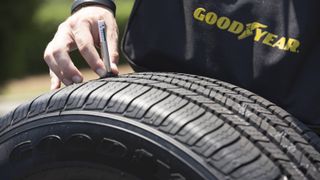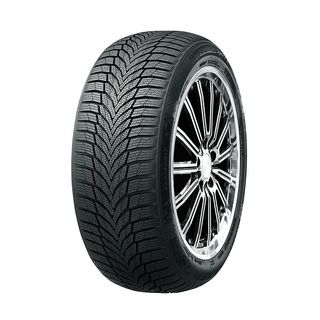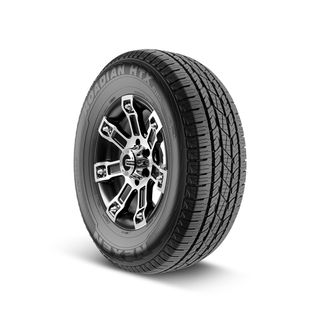The best tire brands have been in the game for a long, long time so they know how to make the best possible tires at the most cost effective level. Get the right tires for your vehicle and you're looking at not only a more road-hugging drive with safer handling, but also more efficiency that could save you on gas and more.
Find the right model from the best tire brands and it could last you a lot longer than a more budget option which could mean you end up saving money over the longer term. Generally speaking all weather tires are the ideal option for most, driving on the highway or in cities. But there are specialist options for snow, sport and wet weather that you might want to consider too.
You can either get the tires and install them yourself or have a local garage source and install them for you. Either way it pays to know the brand you want, the size you need and the pressure for your car. Most of those details are found in your car's manual or online.
In this guide you'll find the best tire brands that are most trusted with a selection of options from each to suit many needs. So you should be able to find the best tires for your vehicle right now. When done with that it might also be worth thinking about the best roadside assistance services, and a look at the best car GPS systems, so you're all set for anything.
Best tire brands 2022
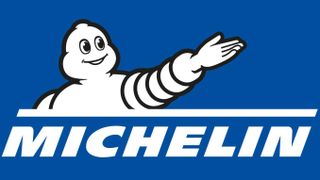
Michelin Tires: Best tire brand overall
Why you can trust Top Ten Reviews
- Best for customer satisfaction
- Top ratings for most models
- High tread-life warranty
- Read our full Michelin tires review
Michelin performs exceptionally well in almost every category of tire. It ranks top across both reader satisfaction surveys, expert reviews and very well in user reviews too, and it's our best tire brand overall. There's not just one great model either, Michelin ranks top across multiple categories making it a safe bet, even if it's not the cheapest around.
It has five major brands - Pilot, Primacy, X, Latitude and Energy - representing 38 different models of tire. CrossClimate, Defender, LTX and Premier only have two models apiece while Diamaris, Agilis and Alpin have one tire model to their name.
The range of brands is designed to fit passenger cars, light trucks, minivans and SUV/crossover vehicles, with many of them made to suit a variety of climates. For example, the Pilot range is available for summer, winter and ‘all-season’ driving. The CrossClimate range of tires is badged as ‘all-weather’. We've selected the top three Michelin tire models to choose from below.
Our favorite Michelin tires right now
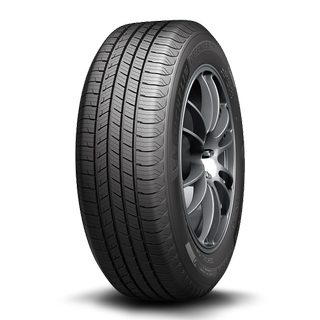
More than just a safe pair of hands, Defender tires come with a huge warranty of up to 90,000 miles, and have consistently topped the charts as the ultimate all-season tire. Competitively priced, the Defender range is also competent in all-weather conditions, even snow and ice. View at Amazon

The Premier A/S is an all-season tire that’s designed for ‘Luxury Performance Touring’ cars or minivans. It is the ‘replacement’ for the popular Primacy MXV4, and tweaks its already impressive features. Reviews aren’t as glowing as the Primacy, but this is still a solid tire.
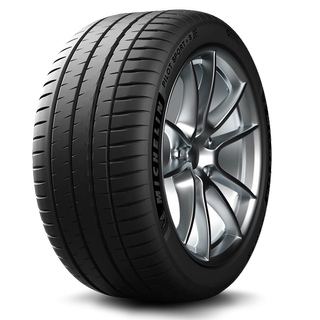
There are thirteen different tires in the range, prices start at $166.00 and end up at a sizeable $600, depending on the model. One of their most popular tires is the Pilot Model 4s, a summer tire that isn’t designed for those chilly winter months but delivers the business on road or track.

Nexen Tires: Best tire brand for value
- Very affordable
- Good quality for the price
- A wide range of tires
- Read our full Nexen Tires review
Nexen Tires is the budget king when it comes to car and truck tires. That doesn't mean it's the cheapest around, but it combines decent quality with a wallet-friendly price. In some cases, its tires are better than the competition at a fraction of the cost, so if you're looking to save money, this is the best tire brand for you.
Nexen has four main brands, NFera for performance, NPriz for car passenger, Roadian for SUV and Light trucks and Winguard for snow and ice.
Not all its tire models are worth considering, but the ones that are, like the Aria AH7, perform brilliantly and often undercut the competition on price. This is Nexen’s strongest point and why we rank them as the best budget tire brand.
Our favorite Nexen tires right now
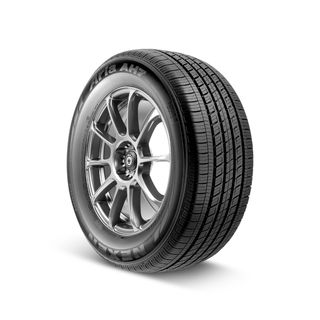
The Aria is an all-season tire that really does perform well in all weather. It’s great in snow and ice, delivers the goods in both dry and wet, handles well, is quiet, comfortable and economical. It also comes in plenty of sizes so the chances are there is a set to fit your car.

Continental & General: Best tire brand for all-terrain treads
- Great all-terrain tires
- Long road tests
- Sadly not very eco-friendly
- Read our full Continental Tires review
Aside from General and Uniroyal, Continental owns Semperit, Barum, Viking, Gislaved, Mabor, Matador and Sportiva brands. That's not all, one in every three new cars is fitted with Continental tires.
Continental manufactures a full range of tires for the auto sector in line with the other top manufacturers, subdivided into Passenger, Light Truck/SUV, Performance and Winter, and for the most part, they’re highly rated by the industry and consumers alike. Similarly, it's US-specific brand, General ('General' is the trade name for Continental Tire of the Americas, LLC) is highly regarded, even though its range is limited by comparison.
As the world's oldest tire manufacturer it's no surprise that Continental ranks highly in both consumer surveys and expert reviews, in most cases coming just behind Michelin and the more high-performance Pirelli. While Continental and General make good tires in all categories it's the all-terrain category they really excel in, lead by the TerrainContact A/T.

Continental’s TerrainContact was in development for three years with more than 1,500 tires tested over 2 million miles. It comes way ahead of second place contenders such as Goodyear’s Wranger and Yokohama’s Geolander, yet costs about the same as Goodyear’s offering.
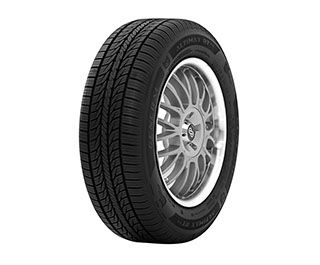
The General Altimax RT43 is one of the best all-season tires you can buy right now. They rate highly in both consumer surveys, user reviews and expert reviews and beat even the Michelin Defender when you factor in price, and you should as the price is low and tread-life massive.
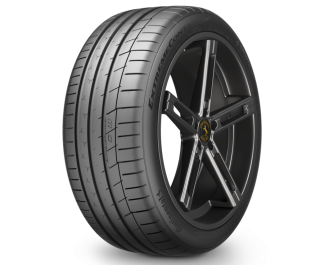
The ExtremeContact Sport summer tire is a great option for performance cars. It’s quiet, brakes brilliantly and costs less than the Michelin Pilot 4, the other tire in this category you should consider. The only downside is that rolling resistance and ride comfort could be better.
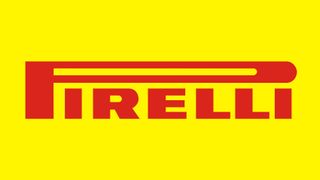
Pirelli Tires: Best tire brand for high-end cars
- A respectable name in tires
- Great for sports cars
- Not the cheapest tires
- Read our full Pirelli Tires review
Pirelli designs high-performance tires for high-performance cars and SUVs. If you're looking for a set of tires for your run-around then look elsewhere, but if you've got a powerful sports car or powerful SUV then Pirelli could be the best tire brand for you.
It ranks highly in both customer and expert reviews, but has slipped a little in recent years and been pipped to the post by Michelin even in the performance categories. Nevertheless, Pirelli remains one of the best tire brands out there.
Some of Pirelli's best tires include the PZero for high-performance summer driving, the Scorpion Verde for SUVs, and the Winter Sottozero 3 for winter driving. The latter is surprisingly competitive in pricing, for a Pirelli.
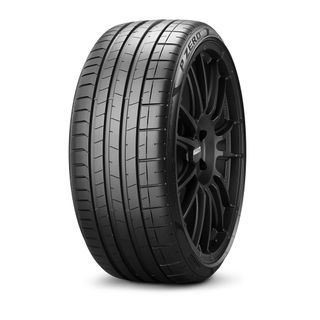
The P Zero is the tire that you’ll find on many of the world’s most exciting, and expensive, supercars including the Ferrari 599 GTB, Lamborghini Huracán, and McLaren 720S. If that’s not enough of a sell for you it is also quiet, stops well in the wet and is resistant to hydroplaning.

The Scorpion Verde is one of the best SUV/Light truck tires you can get. It's quiet, resistant to hydroplaning and performs well in almost all conditions. It also runs flat, so a puncture won’t stop you in your tracks. The only downside is the average ice-braking. Still this is a top SUV tire.

The Sottozero 3 is a good winter tire made better by it’s competitive price. The price is a nice surprise for Pirelli, which is not known for bargain tires. It runs great in the snow, is quiet, runs flat and has impressively low rolling resistance, saving you extra money on your gas costs.

Goodyear Tires: Best tire brand for customer satisfaction
- Well established across the US
- Very reliable tires
- Not the best in any particular area
- Read our Goodyear Tires review
Goodyear is a good tire company with a rich history in the US. The Goodyear blimp is almost as famous as the Michelin Man, but there's a lot more to Goodyear than hot air.
Goodyear ranks in the top three of almost every tire category and while it doesn't top any, almost all its tires are well-worth considering. This reliable level of quality, coupled with its racing pedigree, means Goodyear is a tire brand many people have a special place in their hearts for.
There are three particular brands of Goodyear tires we recommend: the Assurance CS Fuel Max for fuel efficiency, the Eagle Exhilarate for high-performance cars and the Wrangler for all-terrain driving.
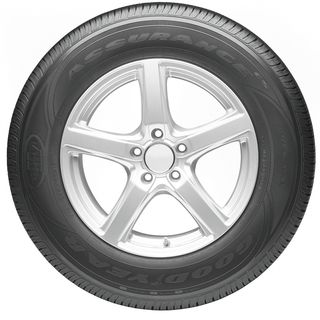
According to Consumer Reports the Assurance CS Fuel Max is Goodyear’s best tire and is outstanding when it comes to rolling resistance, which means you save money on your gas and impact the environment less. It works well in all conditions, even snow, but not ice.
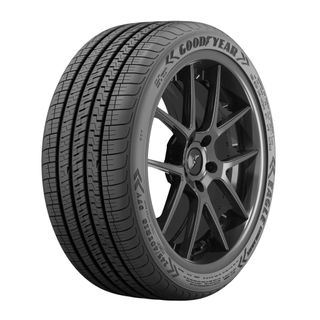
If you’re looking for high-performance tires for your sporty car without breaking the bank then the Eagle Exhilarate is one of the best choices around. The premium tires handle brilliantly in the wet and dry and even brake well on ice. They’re also surprisingly quiet.

There are 12 varieties of the all-terrain Wrangler. All are good, but the Wrangler Fortitude is the best of the lot and is available for trucks and SUVs. It’s designed to work on all sorts of surfaces and weather and even copes well with snow. It also has surprisingly low rolling resistance.
Other tire brands to consider
There are plenty of tire brands out there, many of which actually belong to a bigger manufacturer. There are also some big tire brands that we've reviewed that didn't quite make the cut for this guide. That doesn't mean they're bad, in fact, they may have specific models that perform very well.
Bridgestone is the obvious big one missing from this list. In fact, it's the biggest tire manufacturer around. There's nothing wrong with Bridgestone Tires, it just doesn't make this list yet as it doesn't excel in any one area and, for us, that means it isn't one of the best tire brands.
Yokohama Tires also produces some decent rubber for the road, but again fails to excel and doesn't quite hit the right spot in terms of cost. If you are particularly environmentally conscious though they are a good bet as it uses low-environmental impact materials and manufacturing processes.
Cooper Tires also makes solid off-road rubber, but doesn't quite hit the value mark in our comparisons. And if you want high tread-mile warranties then Hankook Tires is a safe bet, although once again it's not the most affordable.
Tire FAQs
How much do tires cost?
Just because you're buying from the best tire brands, this doesn't mean you have to pay more. Tire prices vary according to size and performance ratings. Based on a comparison of common tire sizes, high-quality tires start around $100 for sedans, $165 for SUVs and $200 for trucks. It is possible to find new tires from some cheap tire brands at less than $50 per tire. The problem with these is they're unlikely to last very long and may have poor rolling resistance, meaning you spend more in the long run.
It's worth noting that installation isn't included and typically costs between $10 and $50 per tire. This also doesn't account for shipping costs, which can run as high as $100 for four tires. However, many online retailers provide free shipping. If you're not getting free shipping to a local service station, then you shouldn't buy tires from that retailer unless you've done the calculations and it's still cheaper than the competition.
When should you replace your tires?

Save money on tire costs for older vehicles with our guide to the best extended car warranties
If you’ve had your car’s tires for a while and you’re not sure whether it’s time for new ones, there is an easy way to find out. Simply get a penny and slide it into one of the numerous grooves on your tire. Make sure the top of Abraham Lincoln’s head is pointed toward the tire as you slide it into the groove. If you can see the top of his Lincoln’s head you need new tires. Being able to see the top of Lincoln’s head means you have less than 1/32 of an inch of tread depth on your tire and the integrity of the tire could be compromised. If the rubber ridges cover the top of his head, you're most likely fine to wait a while longer.
For best results, repeat the penny test on several spots along the tire because they can wear unevenly. If you have excessive wear in the center of your tire but not along the edge, this means you've been driving on overinflated tires. Conversely, if your tires are worn thin around the edges but not in the center, you've been driving on underinflated tires.
If your tire isn't wearing on one side more than the other and instead develops a scalloped pattern of wear, you could need more than just new tires. Talk to your mechanic about the possibility of bent or broken suspension parts. If there's something wrong with your suspension or shocks, your tires move more than necessary, causing the scalloped pattern of wear.
Once you’ve decided to purchase new tires, think about the driving conditions you’re in, as the best tire brand for you may vary on the roads you drive. Consumers who live in hot, dry climates need different tires than those who live in cold, wintry climates. The type of driving you do should also factor in your decision. If you do mostly city driving, you may want different tires to someone who spends many hours a week on the interstate.
What's actually inside a tire?
A tire is a rubber container filled with compressed air, but there's more than that going on beneath the surface. There is a lot more than just air inside your tires, which is part of the reason they don’t explode or deflate totally and immediately when punctured.
Starting at the outside, you see the obvious rubber treads. Underneath, there are steel belts, which hold the tire's shape and keep as much tread on the ground as possible. These belts make the tire stable and functional. Underneath that lies fabric belts. But wait! There's more! At the very inside of every tire is an inner liner, which holds the air, and along with the steel belts, gives the tire its shape. It’s important to be knowledgeable when shopping for tires, and knowing what they’re made of is the first step to take.
Is wheel alignment important?
Alignment is an important part of how your tires perform, and consequently, how your car performs. You could have rubber from any of the best tire brands on your car, but still lose performance if wheels don't align properly. According to Bridgestone, tire alignment is the result of your car's suspension system, which connects the wheels to the car. In short, your car is at its best when the suspension, vehicle and tires work together cohesively. One way to see if your tires are aligned is to check the tread; uneven wear means you should have it adjusted. This is particularly bad because if your tires wear unevenly for too long, they won't perform optimally in terms of control, safety and tread life. That means you'll have a harder time getting traction on slick roads. You should also get your tires aligned if your car pulls to the left or right or if you feel the car vibrating slightly when you drive.
When getting your tires aligned, your mechanic might use some unfamiliar terminology. A tire's camber is its inward or outward angle. Toe alignment refers to how much your tires tilt inward or outward from the center of your vehicle. Another word you might hear at the auto shop is "caster," which is the placement of the center of your tire when you look at it from the side of the car. It's a little complicated, but basically, it impacts your car's steering and cornering. All of these things factor into how your tires wear and eventually how often you need to replace them. Consult your mechanic and let them know how often you drive and in what conditions so they can install your tires in a way that best suits your needs.
How many tires should you replace?
When you realize it's time for new tires you might think you only need to replace the ones that appear to be worn the most. This is incorrect. Even if you think several of your tires have more life left in them, Goodyear recommends replacing all four at the same time. This is particularly important if you buy all-wheel drive tires or those meant for winter driving. If you can't afford all four at the same time, the next best option is to buy two at a time. Try to avoid replacing one tire at a time if at all possible. If one or two of your tires is substantially more worn than the others, this means you've most likely got an alignment problem, and even the best tire brands will wear down at different rates. Tell your mechanic what you see and ask them to find out what’s wrong with your car.
Winter tires: what's the difference?
Winter tires maintain better traction on icy, snowy or otherwise compromised roads. According to Bridgestone, this is because the rubber used to make these tires is softer, allowing it to grip the road better. The treads on these tires are also often deeper than usual and specialized to funnel slush and snow toward the outside edge of the tire and away from the car. If you live in an area with particularly cold and icy winter weather, you can also opt for studded winter tires.
These tires have little metal studs embedded in the rubber that dig into ice, giving you a lot more traction. They should only be used in extreme weather conditions and shouldn't be used on dry pavement, as they can damage the road. Because of this, some states have laws restricting or totally limiting studded tire use. For example, Arizona, Arkansas, Delaware, Iowa and Kansas only allow studded tires during winter months. Michigan and Florida only permit them with rubber stubs affixed over the metal, and Hawaii doesn't allow them at all. But then again, you're probably not going to need them there. A full list is available from AAA.
Bridgestone doesn't recommend you use these specialized tires all year because they wear faster on hot, dry pavement. This can lead to decreased performance. If you don't want to switch out your tires when the weather changes, you'll want to opt for all-season tires. These usually come on the car when it leaves the factory and work in most conditions. If you're only going to experience a little snow here and there, all-season tires will work just fine.
Tire pressure FAQs
How important is proper tire pressure?
Maintaining proper tire pressure is very important, as it plays a role in a car’s safety, performance and tire maintenance. According to AAA, when a vehicle's tire pressure is low, it affects braking distance and makes for less-responsive steering and poorer overall handling. And when the sidewalls of the tire flex excessively due to low air pressure, it generates heat in the tire, thus accelerating tire wear. The excessive heat can also cause the tires to lose tread or blow out. In addition, low air pressure causes the tires to have more surface area, thus lowering fuel efficiency.
Overinflated tires, on the other hand, aren’t quite as problematic, according to AAA. Overinflated tires don't lead to the same kinds of safety issues that can result from underinflated tires. When a tire is overinflated, however, the ride is not as comfortable, and the tread in the middle of the tire wears out faster.
A common mistake people make when checking the air pressure of their tires is to look at the load-rating air-pressure specification printed on the sidewall of the tire. This is not the proper air pressure for your vehicle. In fact, this sidewall specification indicates only the pressure the tire needs to meet its full rated load capacity, and it is often much higher than your car’s proper air pressure. Instead, consult your vehicle's owner's manual to find what the manufacturer has deemed the optimal tire pressure for your vehicle. If you can’t find it, look for a sticker on the driver's-side door or in the glove box.
AAA recommends checking the air pressure with a quality pressure gauge, preferably a digital gauge, once a week. Keep in mind that tire pressure can fluctuate due to outdoor temperatures; tires lose 1 pound of pressure per square inch (psi) for every 10-degree-Fahrenheit drop in temperature, and tire pressure increases by 2 to 6 psi when the tires are hot.
Nitrogen vs Oxygen
The regular air that goes into your tires is comprised of mostly nitrogen with some oxygen, CO2, water vapor and small concentrations of noble gases. However, you can use pure nitrogen. This option is appealing because nitrogen gas is less likely to seep through the rubber, so your tires stay inflated longer. Tires filled with pure nitrogen are also less prone to deflation when the temperature changes, which can be particularly useful for racing cars or driving in extreme climates. If your tire pressure remains constant, you're more likely to see better gas mileage, which can save you money.
That said, air is more readily available and generally less expensive. Most gas stations have air compressors you can use to keep your tires appropriately filled, and you can often use them for free. As such, if your tire starts losing air rapidly and you just need to get it down the block to a mechanic, you can keep filling up your tire with air to get it there instead of paying for a tow. Nitrogen is much harder to find and usually requires a visit to a mechanic, so you're out of luck if you break down on the side of the road. You can't add in regular air on top of the nitrogen. Also, some mechanics charge to fill up tires with nitrogen, which can add to the overall cost of maintaining your car.
Tire load & speed ratings
Every tire has a speed rating and a load rating. The speed rating gives the max speed the tire is built for while the load rating represents the max weight of the automobile. In most cases, even the most basic tires have a speed rating around 118 miles per hour and a load rating that suits most vehicles. These ratings are mostly important for sport performance tires and trucks carrying heavy loads.
How to buy tires
How we found the best car tires
To compare tire brands, we collected a list of the most common tire sizes for the most popular sedans, SUVs and trucks. Focusing on common tire sizes provides a better cross-section view of the brand's offerings and prices.
Tire prices: New tires are a significant purchase, so considering the price is important. Of course, price varies according to size and performance specs, but to simplify our general comparison we looked at average prices across several sizes and styles. For example, Goodyear's average sedan tire is about $108, but this doesn't mean you won't find cheaper options. With as many as six tire options for a sedan, some cost as low as $91 and some as high as $115.
We considered the MSRP when it was listed on the manufacturer's website. However, most tire brands don't sell tires directly from their website and usually don't list the MSRP. In these instances, we considered the lowest price listed by any of the retailers selling the same tire. In most cases, Tire Rack had the best prices, but sometimes Amazon's or Walmart's prices were the lowest.

Need more advice for your car? Check out our guide to the best auto insurance right now
Tread-Life Warranty: Before we started our research, we asked several people, all from middle-income homes, what influenced their tire purchases the most, aside from price. Brenden Farrell, owner of a midsize sedan and hybrid SUV, echoed the most common sentiment: "I am a fan of tire stores having a replacement policy for when they die prematurely." What Brenden is referring to is the tread-life warranty, and it's often what separates similarly priced tires.
A tread-life warranty is the mileage guaranteed for a specific tire. For example, if a tire has a 90,000-mile tread-life warranty, the manufacturer promises to replace the tires if they "die prematurely," as Farrell calls it, before reaching the 90,000 miles. It's an excellent indication of a tire's toughness and lifespan, and represents great value if you combine a good price with a long tread-life warranty.
Of course, making a claim on a tread-life warranty is not as easy as returning the worn-out tires and expecting new ones. Every warranty from the brands I researched has strict limitations and requirements. The most notable of these are the maintenance requirements and the records. For the warranty to be valid, you have to perform regular rotations and alignment checks, and you must keep a record of each maintenance session.
Since the mileage on a tread-life warranty varies according to the tire, I considered the longest tread-life warranty each brand offers for all tire sizes as well as the average tread-life warranty for all tire options fitting a specific size. Some tires, like most winter tires, don't have tread-life warranties. And some tire brands leave the tread-life warranty stipulations to the retailer. In these cases, I didn't consider the warranty, as they vary considerably from one retailer to another.
Performance Options: Every car tire is designed and engineered to a specific performance standard. There are tires designed for all-season, winter, summer, all-terrain, fuel efficiency, sport performance and more. I considered all of the options each tire brand makes for a given tire size. The best brands have tires for each type of performance, but many only have one or two tire options. Every tire size has at least one all-season tire option and most have a winter tire.
Understanding tire sizes
Before you add a set of tires to an online cart, it's critical to make sure the tires will fit your car. Most online retailers ask you to enter the tire size first, but this isn't always the case. Either way, you need to record the size on the sidewall of your current tires.
If it starts with a letter, such as a P, this reflects the type of tire, whether it's a passenger tire or light truck. This is followed by the first number, the tire width. For most vehicles, this is a three-digit number and represents the tire's width in millimeters. Next is a slash separating the tire width from the aspect ratio, a measurement of the tire's height in relation to its width. Following the aspect ratio is an R (Radial) and the wheel's diameter. This last number designates the size of rim the tire fits on.
For example, if a Toyota Camry has P205/65R16 molded into the sidewall of the tire, you need a radial passenger tire with a width of 205 millimeters and a height to width ratio of 65 percent fitting a 16-inch-diameter rim.
Shipping and installation costs
Buying tires online is a great way to avoid aggressive up-selling in a brick-and-mortar service station. However, the savings you find on an online site is often offset by the shipping. Some retailers, like Tire Rack, provide free shipping to the installer of your choosing. If you find a particularly cheap price, make sure to look at the shipping. If you shop around, you should find a tire with free shipping.
Fitting the tires to the rims is an expense you can't avoid, unless you have special tire-fitting tools in your garage at home. Most service stations charge around $20 per tire for the installation, but it varies. It's important to shop around your local area for the best installation prices. You should ask whether they check the alignment. Some service stations (like Discount Tire) don't check the alignment. A bad alignment could cause your tires to wear out quickly and void the tread-life warranty.
Nearly every retailer I researched allows you to ship the tires to a service station of your choosing. Some retailers, like Walmart, ship the tires to their service station. This doesn't mean you must use their service station to install the tires. However, the installation costs are often cheaper if the installer and retailer are partnered. Either way, researching installation fees in your area can help save some money. Just remember that service stations always list the installation price per tire. So if they say the installation is $20, you need to account for $40 to $80, depending on whether you're replacing two tires or all four.
Installing your tires
While you may be a tire expert, some retailers require you to pay for installation during checkout. This means some companies won’t simply send you the tire and let you install it yourself. Make sure to read the fine print while you’re ordering so you aren’t stuck paying for installation if you don’t need to.
Road test period
Some tire brands have road test periods for all their tires. This is a period between 30 and 90 days where you can drive around on tires to see if you're happy with the performance. If the tires don't suit your preferences, you can return them. We've highlighted which tire brands offer road test periods and which don't, in each review.
Save money on tires
Fuel-efficient tires: are they worth it?
Some tire brands have performance tires optimized for fuel efficiency. These tires theoretically save fuel because they require less power to move. This can be an appealing option, especially when gas prices are so high. But is it worth it?
In 2016, Gene Peterson, a tire expert for Consumer Reports, partnered with the University of Michigan to analyze the rolling resistance of fuel-efficient tires. In the study, he found a 1.9 miles per gallon improvement on the fuel-efficient tires they tested. This may not seem significant, but it can add up to a savings of about $78 per year (based on 2016 gas prices). In essence, a fuel-efficient tire isn't going to turn your 25 mpg car into a 50 mpg car, but they do help.
Replacement vs OE Tires
When shopping for tires online, some tires are labeled as "replacement" and some as "OE." The OE stands for "Original Equipment" and represents the tire the manufacturer chose for the car as it rolled out of the factory. If the tire shows up as "replacement," it simply means it wasn't the original tire. This doesn't mean the tire won't perform any better or worse, but there is a greater risk it won't complement the car's intended performance.
According to TireBuyer.com, "OE tires are often purpose-built to make the most of your vehicle’s performance." For example, a manufacturer might choose a "plush, quiet" tire for a luxury vehicle, an "eco-friendly low rolling resistance tire" for a hybrid, and a tire to "highlight tight cornering or straight-line acceleration" for a sports car.
If you're concerned with tire performance, an OE tire represents little risk because the manufacturers chose those tires based on how they perform with your specific vehicle. However, you should consider a replacement tire if you want a very specific type of performance, such as all-season or winter performance.
